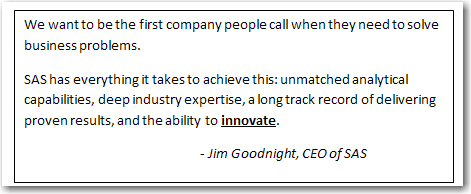In Philosophiæ Naturalis Principia Mathematica, Newton summarized a phenomenon that applies equally well to innovation and to Newtonian Mechanics: “The vis insita, or innate force of matter, is a power of resisting by which every body, as much as in it lies, endeavours to preserve its present state, whether it be of rest or of moving uniformly forward in a straight line.[i]”
The term for that phenomenon is inertia.[1]
Any number of arguments exists for the inertial state. Analysts and project managers like to rationalize their decisions based on cost-benefit analysis. Other arguments rely on the current process being adequate but the system being inadequate, the available time being inadequate, or a change being too large to undertake given the resources available. Total cost and available budget factor heavily into the undertaking. Pedestrian approaches such as return on investment (ROI), while useful in many respects, often fail to capture externalities while providing the risk-averse decision-maker with “hard evidence” to support a position. Prevailing consensus and methodology often eschew innovation.
How then do improvement, innovation, and change occur? How does one improve things over time at a pace faster than one that is, comparatively, glacial; or worse, reactionary? How does the old dog learn a new trick? Whether an object is at rest or in motion, as Newton noted, it continues in that state unless acted upon by an outside force. Better for the force to originate within an organization than from outside an organization in the form of a crisis or debacle. It is better still for the force to act for positive change, not redress.
[1] For the Physicist reader, we use inertia in the simple sense, ignoring the geodesic deviation predicted by general relativity. For more on geodesic deviation, see: Chapman, P. (1978). Measurement of the
geodesic deviation of a gyroscope. Acta Astronautica , 5 (1-2), 19-25.

Robert Rowan is an International Finance Controller for SAS and the author of the insightful book Foreign Currency Financial Reporting from Euro to Yen to Yuan: A Guide to Fundamental Concepts and Practical Applications. You can view a free chapter from Robert's book.


4 Comments
Pingback: Homepage
Robert, I thought I'd pass on a blogging tip. It is best to avoid using curly apostrophes and smart quotes and emdashes in the title of your blog post. Your readers can't ever type in the URL to your blog post because most keyboards lack keys for those. It is best to stick with plain apostrophes and hyphens.
Rob,
Good article. Here is my take. Resistance to change is often the root of the problem. This is understandable because resistance to change is human nature – people like the status quo. I have relied on a simple formula to overcome resistance to change. It is (D x V x F) > R, where R stands for resistance. Do not underestimate how large the R is; it can be enormous. Therefore, in the equation if D, V or F is zero or small, then their combination will not exceed R. You will need all three factors in great abundance. OK. You are now asking what D, V and F stand for.
• D is dissatisfaction with the current state. Unless people have discomfort, they will not be interested in changing anything.
• V is a vision of what “better” looks like. When people see a different view of their circumstances that can lead to an improved condition, they will consider changing.
• F is often neglected – it stands for “first practical steps.” Some may think that a lot of dissatisfaction (D) with a solid vision (V) is sufficient to overcome that large resistance (R) variable. Large amounts of D and V are not enough. If people think the vision is overly theoretical, complicated, costly or impractical, they will not pursue changes to realize that vision. You need F to make the vision attainable.
So how do D, V and F apply? My advice from experience is to first focus on the D. Here is why. Change will only result when people feel compelled to change. Having high levels of dissatisfaction and discomfort, the D, is your best lever to influencing change. But dissatisfaction is often latent, not overt. One needs to create the discomfort in colleagues and executives. This is never easy and risky to one’s career. But it is satisfactory if you avert failing by not acting.
Gary Cokins, SAS
Pingback: This week in blogs: abbreviations, innovation and the holidays - SAS Voices